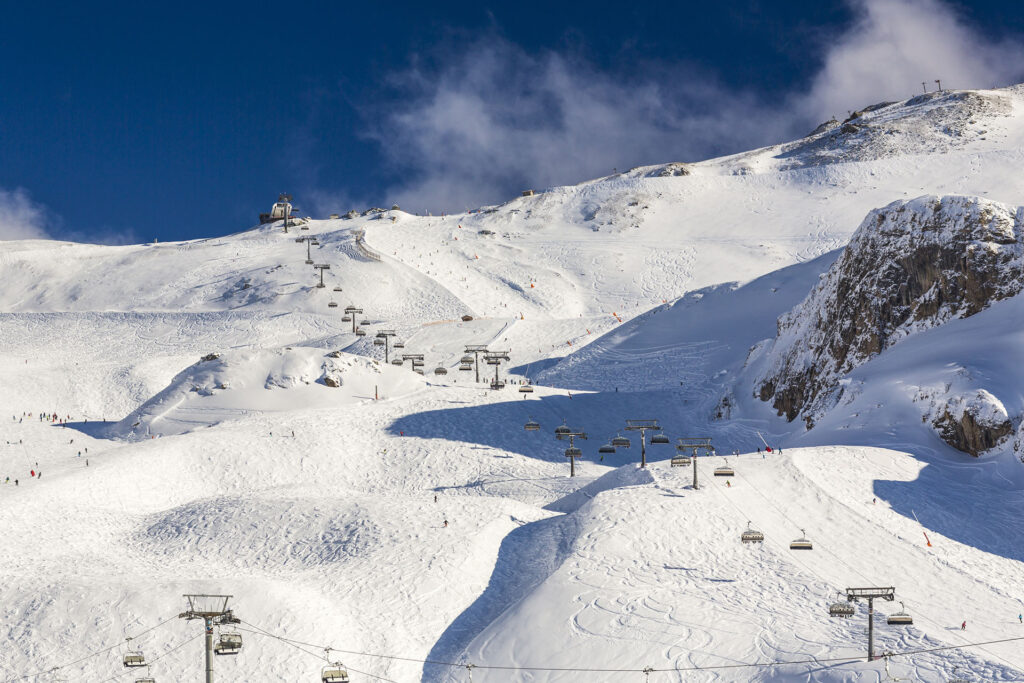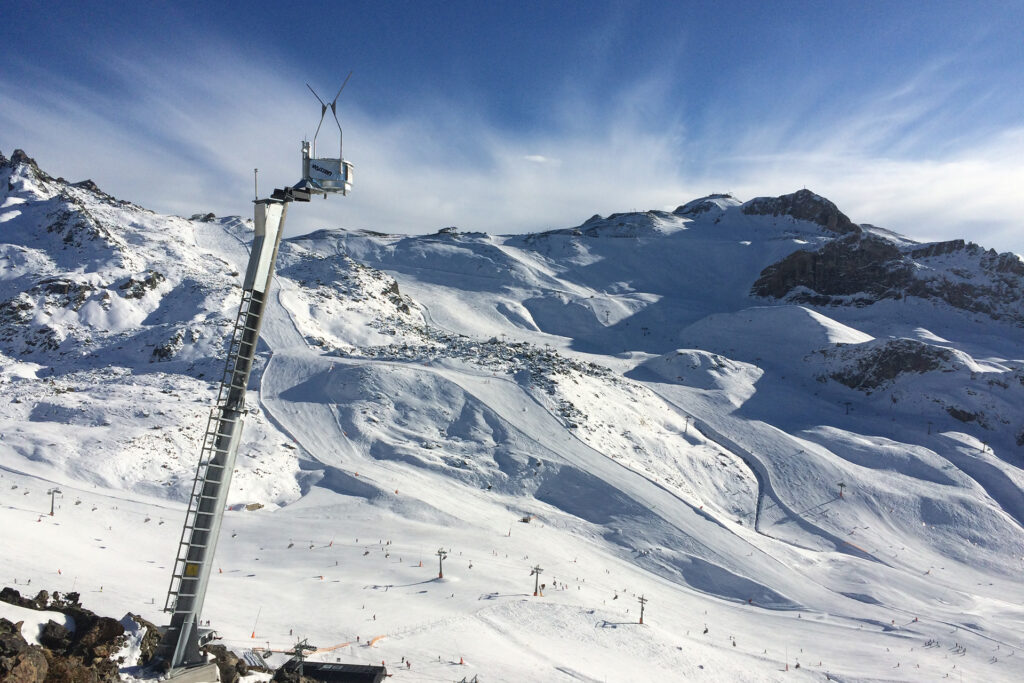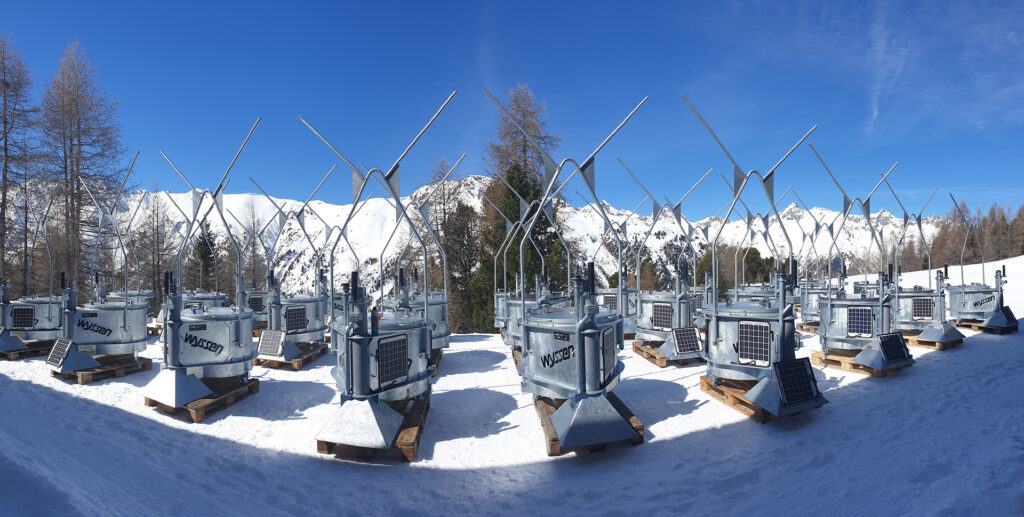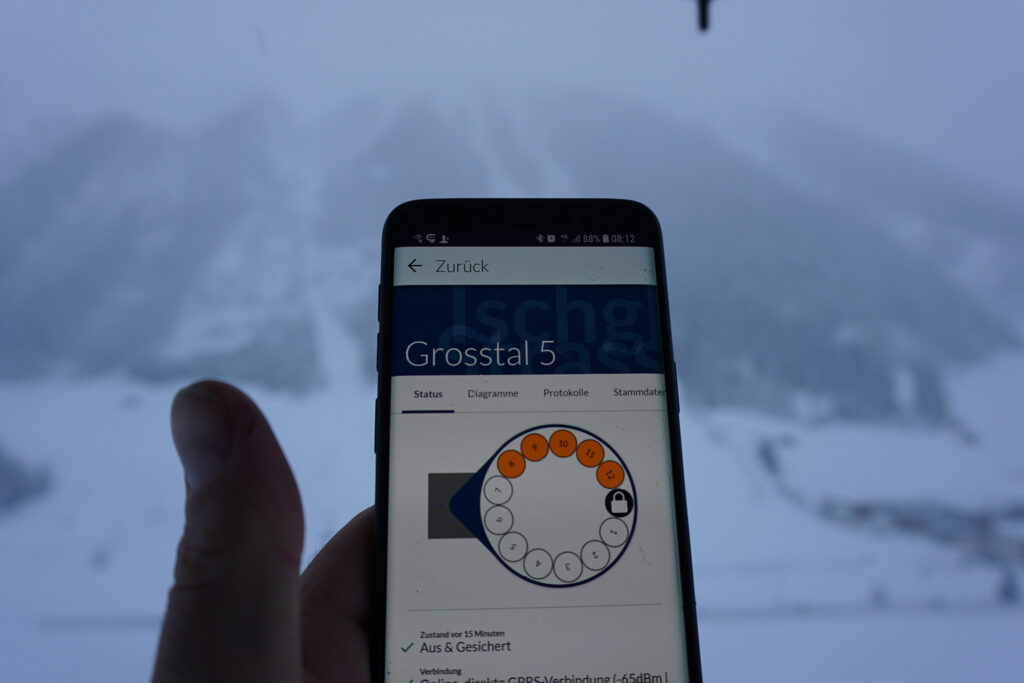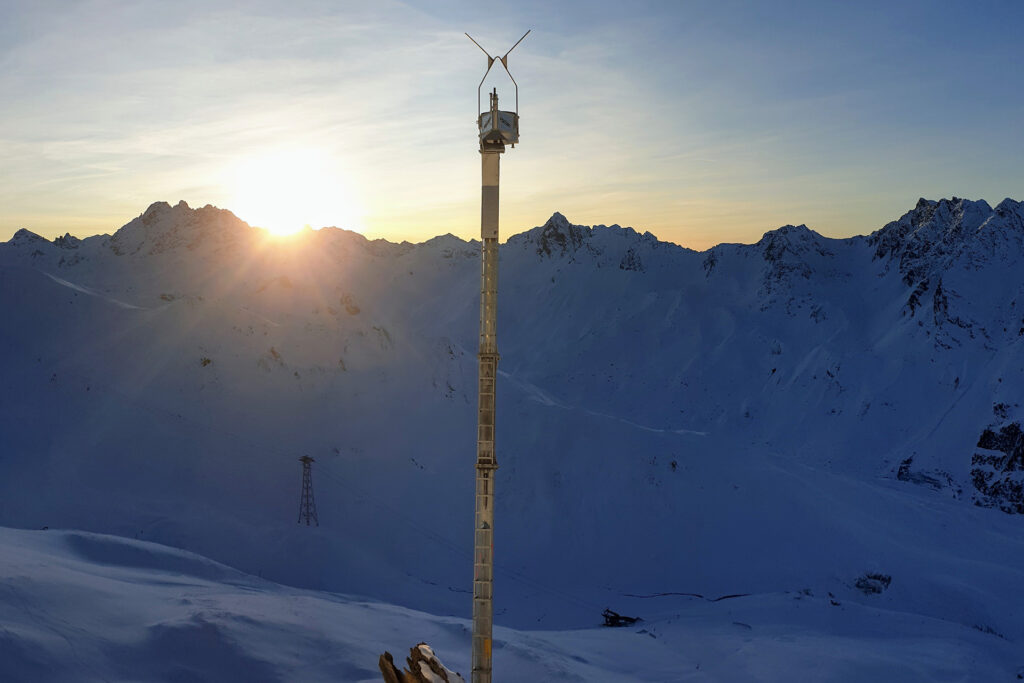Ischgl triggers avalanches within minutes – thanks to WAC.3®
Facts
| Project: | Securing Ski resort Ischgl |
|---|---|
| Place: | Ischgl, Tyrol |
| Country: | Austria |
| Year: | Installation since 2009 |
| Customer: | Silvrettaseilbahn Ischgl |
| Protected Objects: | Ski slopes and mountain railways |
| Installed systems: | - Wyssen Avalanche Tower LS12-5 - WAC.3® |
Ski resort must be safe
How we can protect
In order to increase safety on the slopes and in the ski resort, 55 avalanche towers have been installed in recent years at sensitive points in the starting areas of the ski resort‘s well-known avalanche paths. The ski resort can thus open the slopes earlier or keep them open longer after snowfall. Similarly, in spring, due to the regular activation, there is not as much snow on the avalanche slopes and the pistes can therefore be used without danger despite the warming. The use of the avalanche towers day and night and detonating avalanches via computer instead of out in the field, make the work of the avalanche service team safer. The constant readiness of the avalanche towers (24/7) enables better protection of the ski resort, especially in bad weather conditions, and reduces the number of closed installations. Wyssen avalanche towers enable effective avalanche triggering with minimal impact on nature. In the neighboring ski resort of Samnaun there are also avalanche towers, upwards of 70, that have proven themselves for more than 10 years, securing the ski slopes and the settlement area.
Innovations for protection in ski resorts
Since the construction of the first avalanche blasting tower in 2009, experience has shown that preventive avalanches can significantly reduce slope closure times. Wyssen avalanche towers enable effective avalanche triggering with minimal impact on the environment. Especially in spring, the downhill runs can be used safely and kept open longer. The new WAC.3® user interface allows significant improvements. Thanks to the web-based operation and connection via mobile radio, several systems can be triggered simultaneously. This saves an enormous amount of time. Another major advantage is the constant monitoring of the systems by the manufacturer. If any technical problem should arise, the service technicians can already plan preventive measures via remote access or, if necessary, on site before the next snowfall occurs. This high standard of operating system and service takes pressure off of the avalanche control team and promotes public safety.
